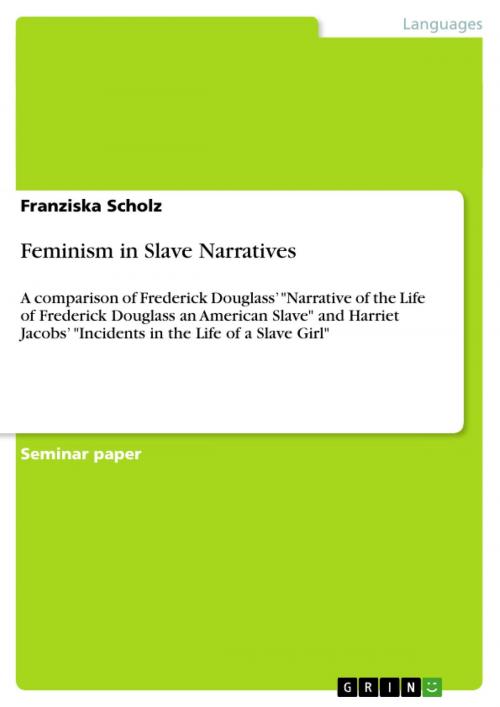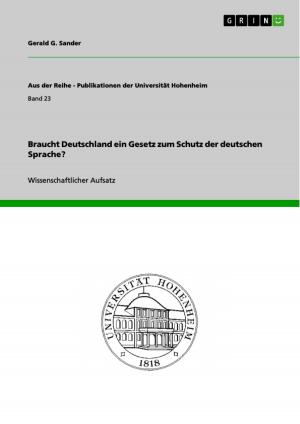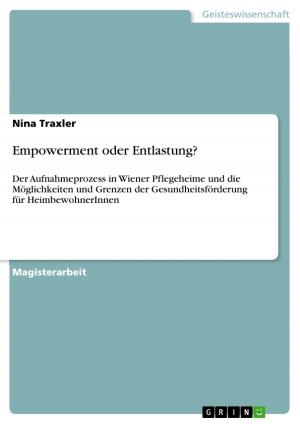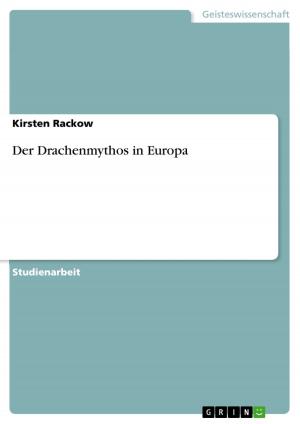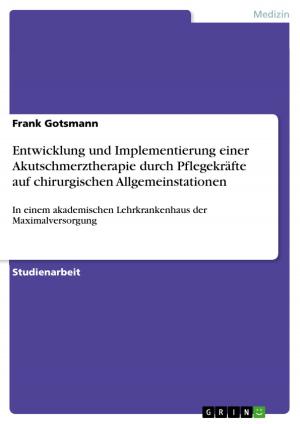Feminism in Slave Narratives
A comparison of Frederick Douglass' 'Narrative of the Life of Frederick Douglass an American Slave' and Harriet Jacobs' 'Incidents in the Life of a Slave Girl'
Fiction & Literature, Literary Theory & Criticism, British| Author: | Franziska Scholz | ISBN: | 9783640477241 |
| Publisher: | GRIN Verlag | Publication: | November 23, 2009 |
| Imprint: | GRIN Verlag | Language: | English |
| Author: | Franziska Scholz |
| ISBN: | 9783640477241 |
| Publisher: | GRIN Verlag |
| Publication: | November 23, 2009 |
| Imprint: | GRIN Verlag |
| Language: | English |
Seminar paper from the year 2006 in the subject English - Literature, Works, grade: 1,7, University of Cologne (Englisches Seminar), course: African American Literature, language: English, abstract: The content of this paper deals with the experiences of American slaves out of a male and a female perspective to outline the relevance of feminism in anti-slavery literature. The first chapter gives an insight into the characteristics of slave narratives such as style, structure, themes and aims. Slave narratives are a product of abolitionism, but the aim of this paper is to show feministic influences as well, as the second chapter illustrates. By comparing the Narrative of the Life of Frederick Douglass an American Slave, written by himself with Harriet Jacobs' Incidents in the Life of a Slave Girl I want to show that the motifs for escape out of slavery are connected to very different factors for a slave woman compared to those of a slave man. Both Douglass and Jacobs suffer from the prevailing system of slavery, but Jacobs' female point-of-view adds the suffrage from patriarchy as well. Finally I am going to follow the question why Douglass' narrative gained more success in the 19th century than Jacobs' narrative, although both stories deal with antislavery, oppression and the struggle for freedom.
Seminar paper from the year 2006 in the subject English - Literature, Works, grade: 1,7, University of Cologne (Englisches Seminar), course: African American Literature, language: English, abstract: The content of this paper deals with the experiences of American slaves out of a male and a female perspective to outline the relevance of feminism in anti-slavery literature. The first chapter gives an insight into the characteristics of slave narratives such as style, structure, themes and aims. Slave narratives are a product of abolitionism, but the aim of this paper is to show feministic influences as well, as the second chapter illustrates. By comparing the Narrative of the Life of Frederick Douglass an American Slave, written by himself with Harriet Jacobs' Incidents in the Life of a Slave Girl I want to show that the motifs for escape out of slavery are connected to very different factors for a slave woman compared to those of a slave man. Both Douglass and Jacobs suffer from the prevailing system of slavery, but Jacobs' female point-of-view adds the suffrage from patriarchy as well. Finally I am going to follow the question why Douglass' narrative gained more success in the 19th century than Jacobs' narrative, although both stories deal with antislavery, oppression and the struggle for freedom.
